Articles
The Next Step: Finding a Database for You
April 25, 2013 by EJRT
Filed under Archives, Articles, Genealogy Research Resources, Online Tools
 Genealogy is all about connections — the connections between you and your ancestors, between your ancestors and their historical context, and amongst all of the facts and records that together help to weave the tartan of your past.
Genealogy is all about connections — the connections between you and your ancestors, between your ancestors and their historical context, and amongst all of the facts and records that together help to weave the tartan of your past.
Just as no one resource can provide all your answers, no one tool will solve all your problems. For every piece of the puzzle you need to improvise a new solution — so, to avoid spinning your wheels against a brick wall it’s best to get acquainted with all of your options.
Genealogy Beginner can get you started with knowledge of all the best practices and methodology, but where do you go from there? An easy first step is an online service like Ancestry.com, where you can easily search birth, marriage, and death Records
, browse their Obituary Collection
, and then start your free family tree
to keep it all organized.
There are many such services, each with their own unique archives and site features. Ancestry.com is perhaps more user-friendly collaborative than other services, in that once you enter in some basic information the service actively works to fill in the blanks, drawing upon both public records and the work of other members. If the suggestions sound right, just click to add them to your own tree — which then becomes part of the cycle, as the more complete your tree the more the site’s search engine has to work with.
The best part of services like this is that they give you a start in collecting your thoughts without asking for much of an investment, either in terms of time or money. In the case of Ancestry.com, the basic subscription is fairly inexpensive; to get overseas records you will need to upgrade, which is a little more. If you decide it’s not what you need, you can just cancel and try another service; all you’re out is maybe ten, fifteen bucks. If you cancel within 14 days, there’s no charge at all.
What they’re banking on is the appeal of their interface and search tools — and you know what? It’s a good bet. What would be hours of manual, tedious research is reduced to a few seconds of behind-the-scenes pattern-matching. There is of course a limit to any online database, and the wow value here should be over by the time your trial period is up — but even for an experienced genealogist the elegance and dynamism of their tools can be hard to give up.
So, it’s worth a shot. Try a membership at Ancestry.com, and if it’s not your thing then at least you’ll better know your options. If it is, there’s one more tool under your belt.
150-Year-Old Family Bible Recovered
December 4, 2012 by ramona
Filed under Articles, Latest News
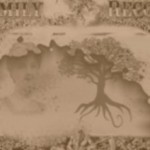 Sometimes the most precious gifts we receive come in the form of a kind gesture from a total stranger.
Sometimes the most precious gifts we receive come in the form of a kind gesture from a total stranger.
Such was the case for a Denver woman who received an email this month from a thoughtful stranger in Arizona…1500 miles away. The email contained information about a 150-year-old family bible, an attachment with pictures of the bible and a query as to whether the bible belonged to the Denver woman’s family. Together with the pictures was a hand written page that the woman immediately recognized as her great grandfathers.
The email also held the information that the bible – purchased by a picker at an estate sale – was slated for an upcoming auction. The decision was made to travel to Arizona and make a bid for the lost family treasure.
With Christmas, fast approaching the spirit of giving must truly be in the air for when the woman and her family reached their destination they received yet another surprise. The auction house closed the sale and gave the bible back to the family.
Contained within the bible was a peacock feather, photographs, lace and locks of hair: along with pages of family deaths, marriages and births.
The woman who sent the email stated that she felt compelled to find the bibles rightful home and it only took her a few days to find the family line that led her to the Denver woman.
Kindness in the Genealogy Community
Something wonderful about the genealogy community is that stories like this one are not unique. To find evidence of this you need look no further than the internet to discover some fantastic websites such as Ancestor’s Lost and Found.
Ancestor’s Lost and Found is a searchable site dedicated to returning lost memorabilia found by others to their rightful descendants.
Its directory pages are filled with:
- Lost treasures: A section where you can post lost family items you are searching for
- Treasures to Share: Found items people are willing to share
- Treasures Found: Items found by individuals who would like to return them to the correct families
- The Mystery Gallery: Family Tree Photos in need of identification
- Family Bibles: a page set aside for Family Bibles containing genealogy information
Ancestor’s Lost and Found is sponsored by USGenNet: a not for profit webhosting service developed specifically to support sites such as this one. USGenNet relies on donations for continued support, if you would like to help out with a tax deductable donation visit here.
Native American Genealogy
November 30, 2012 by ramona
Filed under Genealogy Research Resources, Latest News, Sharing Genealogy Information
 Native American genealogy can present some unique research problems, distinct from family trees that are deeply rooted in Europe and Great Britain.
Native American genealogy can present some unique research problems, distinct from family trees that are deeply rooted in Europe and Great Britain.
Native American genealogy is simply not a straightforward matter of pouring through the usual church and census records.
Researchers on the trail of their Native American ancestors need to develop an understanding of tribal:
- Traditions
- Culture
- Naming customs
- Kinship systems
- History
All of which vary greatly between the different nations.
The good news for genealogy beginners’ starting out with Native American genealogy is that there is no shortage of resources for learning the basics of the nation you are researching. Two wonderful sources to start the ball rolling are the National Archives: Native American Heritage and Family Search: American Indian Genealogy
Once you have done your homework, here is another excellent resource you will find enriching.
Native American Genealogy: A recorded history
Edward Curtis
In the early 1900s, photographer Edward Curtis began to fulfill a major life goal: to record as much of the traditional life of Native American peoples as possible, before it disappeared.
Endorsed by President Theodore Roosevelt and funded by financier J.P. Morgan, Edward Curtis devoted the next thirty years of his life to the project. Travelling across the United States and Canada as far as the Northwest Territories Curtis documented over 80 tribes, for which he earned the nickname “Shadow Catcher”.
What makes Curtis’ body of work so remarkable is his insight that the present is a result of the past, and therefore must play a significant role in the portrayal of a people. To this end Curtis was not satisfied with posed pictures taken on reservations but instead set out to capture life lived or as it was lived in more natural settings.
Due to his efforts, now an invaluable collection of media includes recorded:
- Language
- Music
- Tribal mythologies and history
- Described tribal population
- Traditional foods
- Dwellings
- Clothing
- Games
- Ceremonies
- Burial customs
In addition to this, Curtis managed to capture the images of many notable Indian people of the time, including Red Cloud, Geronimo, Medicine Crow and Chief Joseph.
http://youtu.be/oVPLF9tXWlg
In due course Curtis shot over 40,000 photographs, conserved 10,000 audio recordings and made what is considered the world’s first documentary film.
My Heritage Buys Geni.com
November 27, 2012 by ramona
Filed under Articles, Latest News
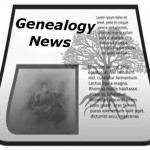
Israeli based genealogy site My Heritage just purchased competitor Geni.com. The purchase will allow My Heritage to acquire billions more global records, making the company a huge competitor in the genealogy market.
The addition of the Geni.com records brings My Heritage up to approximately 72 million registered users. These numbers elevate My Heritage as a serious competitor to Ancestry.com, which had about 1.87 million users as of the first quarter of 2012. One more point that solidifies My Heritage as a global force in online genealogy research is the site’s focus on collaboration and record sharing: which gives it a great social media feel.
Gilad Japhet, founder and CEO of My Heritage commented. “Today’s news is a major turning-point for the family history industry, giving us significant new resources to extend our market leadership and deliver new value to families worldwide,”
Adding…
“Well established as an innovative and social brand, Geni.com is a natural addition to My Heritage and together we look forward to taking collaborative family history to new heights. Over the past few years our dedicated workforce has transformed My Heritage from a garage start-up into a successful, dynamic and global company. With new funds, impressive new talent from Geni.com and new world-class leaders on our Board, we look forward to fulfilling our potential and accomplishing our mission to bring family history to the masses.”
Along with the new records, My Heritage also gains some new talent in the form of Geni.com employees and engineers. One more addition to the My heritage family will be founder of Geni.com David Sacks, who will take a seat on the My Heritage board of directors.
About the sale, Sacks says, “What we’ve learned over the years building Geni is that there are three key assets that customers want in the genealogy space: records, private trees, and the world family tree. This deal brings together all of these pieces to form the most complete offering in the genealogy space. Together with My Heritage, we look forward to continuing Geni’s mission of connecting humanity through a single family tree”
Although united, the two companies will operate separately keeping their independent services: yet allowing users an option to collaborate. A system of two-way information exchange between the sites is a huge added-value initiative for users of both sites. My Heritage users gain additional records and Geni.com users gain My Heritage’s Smart Matching technology (a fantastic tool that finds common matches between user’s family trees) and access to My Heritage DNA kits for those interested in genetic genealogy.
Iceland: Genealogy with a Twist
November 23, 2012 by ramona
Filed under Articles, Genealogy and Immigration, Latest News
 Most people are interested in genealogy as a hobby, an addictive search for a family tree whose roots are yet undiscovered.
Most people are interested in genealogy as a hobby, an addictive search for a family tree whose roots are yet undiscovered.
In Iceland however, genealogy takes on a broader importance. It becomes a necessity for singles with the natural desire to settle down and perhaps start a family.
Why… because with a current population of about 318,000 people whose ancestors have lived on this isolated island since the late Viking age (approximately the year 870) finding someone you are not closely related to can become a daunting task.
Not to worry, Icelanders have come up with a solution to the problem that gives a unique slant to genealogy research.
The Islendingabok
Their solution: the Islendingabok, an online genealogical database that holds the ancestral information of Iceland’s inhabitants going back 1,200 years. The Íslendingabók combines the science of medical genetics and some major software, with the aim of tracing the family relationships of the countries citizens since the time of settlement. It also uses techniques more familiar to family history research: such as church and census records.
The database allows Icelanders to make certain they are not about to become kissing cousins: however, it is in Icelandic only.
Icelandic Immigration
Although many descendants of Iceland’s original settlers stayed, there were also those who immigrated to North America.
Iceland near the end of the 19th century was a land of stark beauty. It was also a land of overwhelming hardships stemming from conditions of over population, economic adversity, violent volcanic eruptions and extreme cold. It was at this time that even some of the staunchest Icelanders left in search of greener pastures.
However, Icelandic nationalism remains as strong as the stories of home. Generations later, some Icelandic ex-pats feel the pull of heimthrá, or being in thrall of home. For descendents of those immigrants, there is a wealth of information concerning Icelandic genealogy on Hálfdan Helgason’s site dedicated to the Icelandic Emigration to North America.
More links to Icelandic genealogy can be found here…but before you go remember to download your FREE Family Tree Starter Kit available with your 30-day free trial to Genealogy Beginner.
Family Search: Launches Huge Project
November 16, 2012 by ramona
Filed under Articles, Latest News
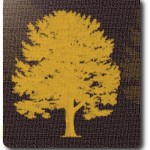 After the huge effort earlier this year to transcribe the 1940 census Family Search is once again making big plans to help genealogists and family history fanatics world wide.
After the huge effort earlier this year to transcribe the 1940 census Family Search is once again making big plans to help genealogists and family history fanatics world wide.
The new project will see the not for profit genealogy giant sending 200 teams around the world to photograph 320 million images of birth, death, wills, immigration and church records from 45 countries.
After being photographed, the images – at a rate of roughly 300 per day – will be sent to Salt Lake City and published to the website within a month.
Of course, this is all pending permission to photograph the images. A task more easily accomplished in some countries than others.
New Records to help build Your Family Tree
Already the holders of the largest database of genealogical records globally, Family Search adds new records and images on a monthly basis.
So far this month they have already added numerous records and images to their collections from:
|
The US Brazil Colombia Czech Republic England Estonia Hungary Indonesia Ireland |
Italy Netherlands New Zealand Canada Peru Portugal Slovakia Spain Sweden |
Best of all, Family Search provides free access to all records and images.
Before you get started digging up your roots make sure you are fully organized and prepared. Check out Genealogy Beginner’s lessons, Family Tree Charts and Research Tracking Forms: available at no cost with your 30-day free trial.
Family Lore: Fact or Fiction
November 8, 2012 by ramona
Filed under Articles, Family History, Latest News
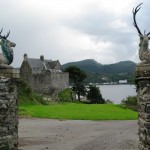 After 20 plus years doing genealogy I can safely say that I have yet to come across a family that does not have an amazing family legend – or two – to share.
After 20 plus years doing genealogy I can safely say that I have yet to come across a family that does not have an amazing family legend – or two – to share.
Tales of ancestors, who were involved in well-known historical events, descent from famous individuals or claims to medieval castles count among the usual family tales.
These stories, often long established and deeply rooted, become a part of oral tradition as they are passed from generation to generation.
My first experience with family lore (many, many years ago) came with a visit from a McCallum relative who had recently returned from a trip to Scotland. Along with the wonderful gifts and souvenirs, she brought back a story of how she had visited Duntrune: the haunted family castle in Argyll.
My imagination ignited, I sat transfixed as she related the fantastic tale of our ancient family seat, that now, through the luck of birth order in a long distant past, belonged to a distant cousin…or so the story goes.
The Family Tree Connection
The cousin in question is 19th Laird of the clan, Robin Neill Malcolm. Who related a tale about the castle being haunted? Although he himself had never seen a ghost or experienced anything unusual, he did say that his parents had.
In Fact his step-mother refused to stay there alone as it was common for objects to move about in the night.
The Story
In the 1600s Duntrune Castle was the home of the Campbells in Argyll. During the wars of that time, the Campbell chief was called away. In his absence, the McDonalds attacked and overtook the castle killing all who had been left behind, with the exception of the piper.
Knowing that the Campbells would return, the McDonalds laid in wait, hoping to set a deadly trap for the clan chief. However, they did not count on the cunningness of the piper who upon seeing his lords ship returning began to pipe a lively tune, which quickly turned to a dire warning.
The McDonalds realizing what had happened were angered and in retaliation, they cut off the pipers hands: an act, which ended his life. To this day, there have been stories of ghostly piping and other unexplainable events.
The story of Duntrune Castle from the Discovery Kids network:
In my youth, I loved to relate this story of our haunted castle. However as I grew older and became involved in genealogy I began to question the truth of the tale…and not just the ghost story.
It was the story of Duntrune which led me to develop a strong interest in finding truths behind family tales and legends.
Join me Thursday, 15 November 2012, and using the Duntrune case study, you will learn the research skills and techniques needed to help verify whether your family story is fact or fiction.
Tall Tales & Old Blood – LIVE chat with Ramona Hartley
Thursday, 15 November 2012
20:00 until 21:00 in EST
Hosted by Genealogy Beginner
Image courtesy of emalcolmjr via Photobucket
Scotland’s People Publish Wills: 1902 and 1925
November 4, 2012 by ramona
Filed under Articles, Latest News
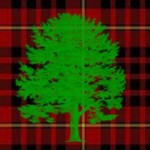 Today, Scotland’s People, the popular website for Scottish Genealogy made public the wills and testaments of 267,548 people.
Today, Scotland’s People, the popular website for Scottish Genealogy made public the wills and testaments of 267,548 people.
The collection, held by the National Records of Scotland includes the last wishes of persons who died in the country between1902 and 1925.
Records that may be of particular interest to genealogists and historians are the last wills and testaments of:
- Poorhouse inmates
- WWI soldiers
- Suffragettes
- Victims of the Titanic disaster
- Over 35 millionaires
Records keeper for Scotland and acting registrar general Audrey Robertson, commented, “We’re proud to be marking the 10th anniversary of ScotlandsPeople by creating a major enhancement of our popular resource for Scottish family history. The 400,000 additional testament entries from 1902 to 1925 will open up exciting new avenues for people in enhancement of our popular resource for Scottish family history.”
Family Tree Research
Genealogy beginners who have not yet searched this record type may be interested to learn that there are two types of wills.
The first, a Testament or Testamentary was made up of four parts: an introductory clause, an inventory, a confirmation clause and a copy of the will. This form of will was prepared before death.
The second is the Testament Dative, which was prepared after decease for the purpose of appointing an executor or clearing debts. Although it should be made clear that, it was not mandatory for any person to make a will under Scottish Law
The information you may find on a Testament or Testament Dative may include a list of the departed’s personal property along with a glimpse into their state of mind: in addition to their title (if any), occupation and place of residence.
Scotlandspeople Site info:
Search: Free
Document View: $$$
Requires registration
Genealogy: Solving History’s Mysteries
October 23, 2012 by ramona
Filed under Articles, Genealogy Research Resources, Latest News
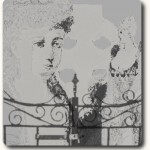 A skeleton excavated in 1992 at London’s historic Crossbones Cemetery has puzzled archeologists from the Museum of London for several years.
A skeleton excavated in 1992 at London’s historic Crossbones Cemetery has puzzled archeologists from the Museum of London for several years.
A team of forensic scientists and historical researchers from The Center for Anatomy and Human identification at Dundee University takes on the enigmatic case. Using scientific methods and following a trail of genealogical records, the team endeavors to discover the identity of the skeleton nick named “Crossbones Girl” and the circumstances that led to her death.
Crossbones Cemetery
Crossbones Cemetery is located in London’s oldest borough and dates to medieval times. Although it is classified as a pauper’s burial ground it was more than that. Well documented in historical records, Crossbones Cemetery was well known to be a “single women’s” final resting place — in modern terms, a graveyard for prostitutes.
In a 1598 survey of London, historian John Stow writes, “I have heard of ancient men, of good credit, report that these single women were forbidden the rites of the church, so long as they continued that sinful life, and were excluded from Christian burial, if they were not reconciled before their death. And therefore there was a plot of ground called the Single Woman’s churchyard, appointed for them far from the parish church.”
By the 19th century the graveyard’s reputation was well known, as can be seen in the 1833 writings of antiquarian William Taylor: “’There is an unconsecrated burial ground known as the Cross Bones at the corner of Redcross Street, formerly called the Single Woman’s burial ground, which is said to have been used for this purpose.”
Today regular vigils are held in memory of the souls buried in this notorious grave site.
The Case
Excavated from the upper layers of this infamous cemetery is the heavily scarred skeleton of a young woman. After an examination of her remains forensic scientists decode the message in the bones.
- Taking measurements, it is concluded that she was about 4’7″ tall.
- Stable isotope analysis reveals a poor diet.
- 3-D X-rays of the skeleton indicate that she was in her teens (possibly between 16 – 19) at time of death.
- The condition of the skeleton shows undeniable signs of syphilis.
- Further analysis discloses that she underwent Mercury treatment, commonly used at the time to relieve the symptoms of syphilis (which affected roughly 15% of the British population).
- Scientists theorized that it is unlikely she died of syphilis, as the skeleton shows signs of healing.
Theory: They are looking at a very unfortunate young woman who had to turn to prostitution for her survival.
Can Genealogical Documents Tell the Story?
Scientific research can only uncover so much; now it is up to the historical researchers to flesh out the rest of her story using genealogical methods and documents. A researcher from the London Metropolitan Archives is brought in to see if a paper trail can be established.
First, a timeline needs to be determined.
The remains of “crossbones girl’” were recovered from the upper layers of the cemetery, which was closed in October of 1853. By cross-referencing hospital, workhouse, and burial registers, a period between 1851 and 1853 is settled through process of elimination. The age of the subject made this process easier, as deaths of the very old and very young are common but deaths in the 16-19 age group are far less so.
Among the records consulted are:
- St. Thomas’s Hospital – dead book (a charity hospital in Suffolk)
- The City of London burial index
- The Hakney Archives
While looking through the St. Thomas’s Hospital dead book, a name jumps out. It is the name of a woman who was placed in what was then called the “foul” ward — a ward for women suffering from syphilis.
The name of the patient is Elizabeth Mitchell, a 19-year-old woman who came in to be treated for “discharge and sores”. In the margins beside her name is an entry that states that the patient died from pneumonia on 15 Aug 1851. (This coincides with the scientists’ suggestion that she did not die from the disease.) Also strengthening this is entry #2090 from the St. Xavier parish records:
- Eizabeth Mitchell, aged 19
- Buried 22 Aug 1851 by Mr. Day, Minister.
- Her residence was listed as St. Thomas Hospital.
While this is not 100% conclusive proof, the burial record puts Elizabeth Mitchell in the same part of the graveyard in which the skeleton was found.
In the end, scientists and historical researchers alike were satisfied that “Crossbones Girl” could very plausibly be, and likely is, Elizabeth Mitchell.
Genealogy is already an exciting and challenging pastime; however, when you add elements of archaeology and forensic science to genealogical detective work it is nothing short of mesmerizing. Add to this the aspect of DNA and you begin to see not only one new direction genealogy has taken but the future possibilities as well.
Ancestry.com: SOLD
October 21, 2012 by ramona
Filed under Articles, Latest News
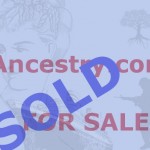
Thank You Ancestry.com for the countless Family Trees that have been built due to the access you have provided.
Thank you for the Census, Passenger lists and military records: not to mention the numerous collections and genealogical documents dating back to the 13th century.
Ancestry.com has been providing service to genealogists around the world for the past 15 years. Starting out in the 1980’s as Ancestry Inc: back at the beginning of online research when family history hunters had to use snail mail and visit dusty old libraries and archives.
Since that time, the company has grown to more than 2 million online subscribers.
However, as the saying goes…all good things must end…and October marks the end of an era for the genealogy giant.
This week Ancestry.com will pass the hat on to private equity firm Permira, who purchased the company for $1.6 billion. Ancestry’s new owners report that there are big plans in store for the company. Spokesman and partner for Permira, Brian Ruder stated, “With its pioneering technology and market leading position, Ancestry.com is an exciting investment opportunity for the Permira funds,” adding, “We are thrilled to be able to back the company as it continues to develop new and innovative content, and expand in both its core markets and into new geographies.”
At sale date the company employed 850 people in 10 offices across the US, Britain, Italy and Germany.
Ending on a positive note, Tim Sullivan a chief executive of Ancestry.com remarked, “This is a successful outcome for our public stockholders, and a great day for Ancestry.com employees and subscribers around the world.”
